FREE INTERNATIONAL DELIVERY
ETHICALLY SOURCED DIAMONDS
60 DAY RETURN POLICY
13th December 2023

Diamond stud earrings have become very popular in recent years. With minimalist jewellery becoming trendy, Diamond studs make the perfect gift for a loved one, a relative or even yourself.
We will help you to find the perfect pair of Diamond earrings, whatever your style preferences and budget.
This guide will answer these questions.
The shape of your Diamond studs will likely be the first thing people will notice, so it’s important you choose one that suits you the best. There are three shapes of Diamond studs commonly available to purchase. They were all designed with a different objective in mind.
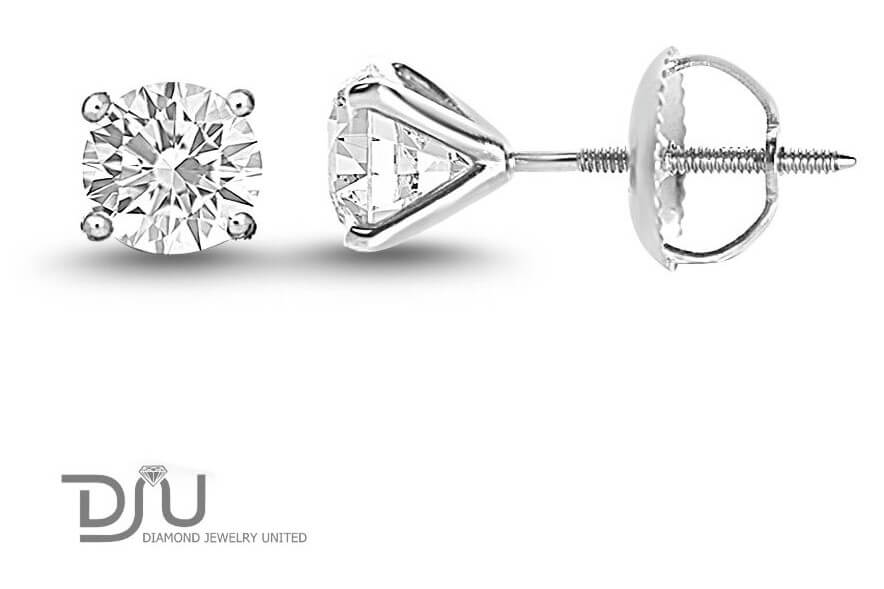
The most popular shape for Diamond stud earrings is the round brilliant, as it reflects the light to create high brilliance and fire. A round Diamond stud will have 58 facets, or 57 if the bottom of the Diamond, known as culet, hasn’t been cut and remains pointed. The facets are distributed among Diamond’s top (crown), the middle (girdle), and the base (pavilion).
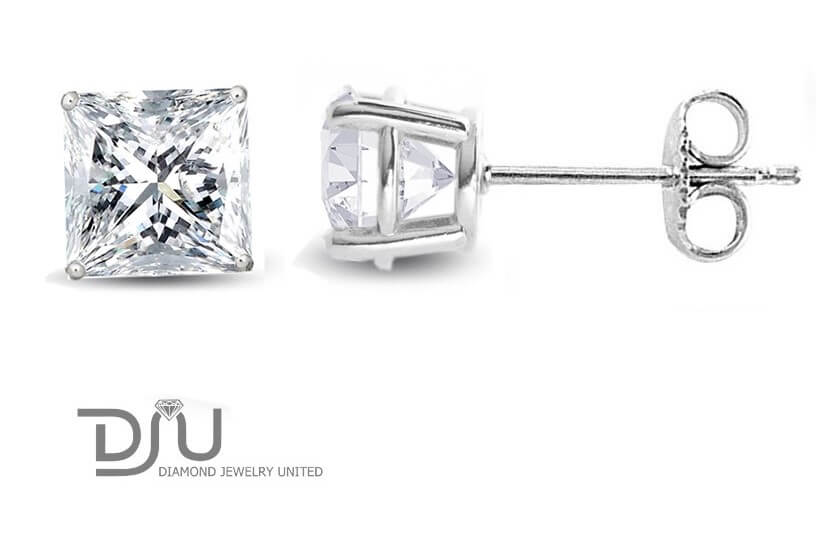
The square Princess cut is the second most popular shape for stud earrings. It was designed after an extensive poll where women were asked what they wanted. It has a square shape with either 57 or 58 facets for amazing sparkle. Princess cut studs require a four-prong setting to protect the Diamond’s corners.
A cushion cut is the third most popular shape of Diamond studs. It’s a combination of the round cut and the princess cut, giving it a cushion-like appearance with soft edges. A cushion-cut Diamond stud will have 58 facets and can come in different ratios, meaning it can be square or rectangular.
Most Diamond stud earrings come in White gold or Platinum. Yellow gold is another option, but it’s less popular, as it reflects colour, making the Diamond appear yellowish.
14k Gold is a great choice for stud earrings, as it’s purer than 9k gold, but stronger than 18k or 24k gold. It’s also lighter than Platinum, therefore more comfortable to wear.
Diamond studs usually come in a prong, basket, martini or bezel setting.
The prong setting, also known as the claw setting, has three, four or six evenly-spaced prongs holding the Diamond in place. The prongs can be rounded or flat. Prong setting usually comes in two types.
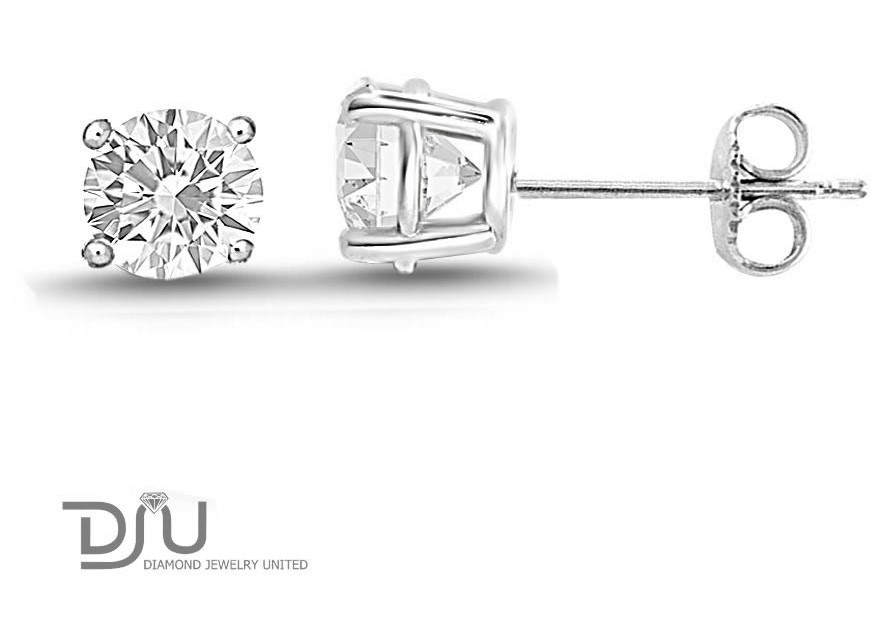
When you look at a basket-set stud from the side, you will see horizontal bands which connect the prongs, creating a basket-like base that holds the Diamond.
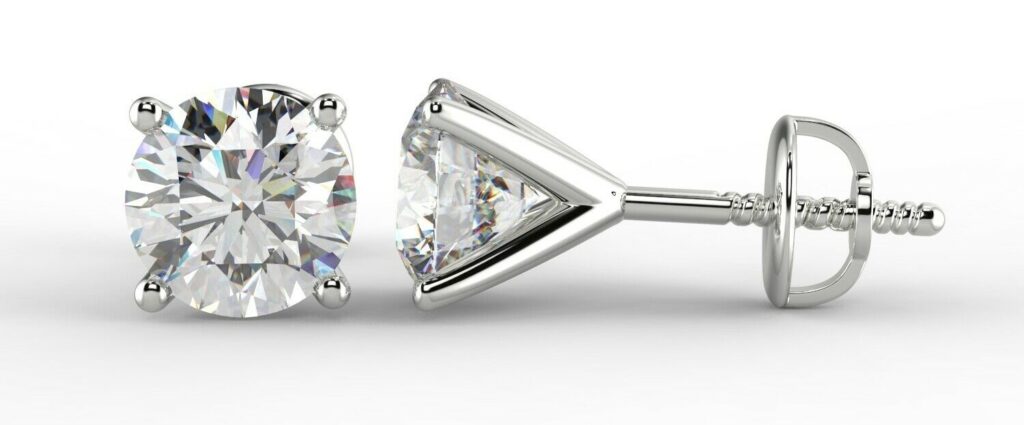
The martini-style setting has a cone-like shape. The lower part of the Martini prong setting becomes gradually narrower, resembling a martini glass, hence the name. It’s the most popular setting for Diamond earring studs, as it allows the light to enter the Diamond from all sides.
With a bezel setting, the Diamond is held inside a thin gold rim. While this type of setting protects the stone, it also partially hides it, making it appear less prominent and potentially reducing its sparkle.
There are two types of backing most commonly used for Diamond stud earrings – push-backs and screw-backs.
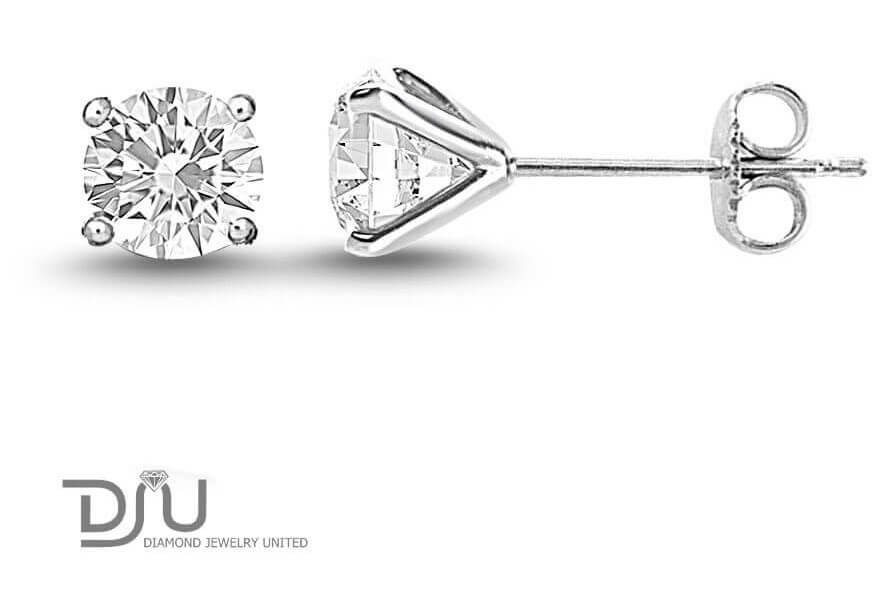
The most common earring backing design is a butterfly push-back, also known as friction back. The butterfly back slides onto a standard earring post, with a notch near the end of the post to hold your studs in place. Push-backs are easier to use than screw-backs. However, they are less secure.
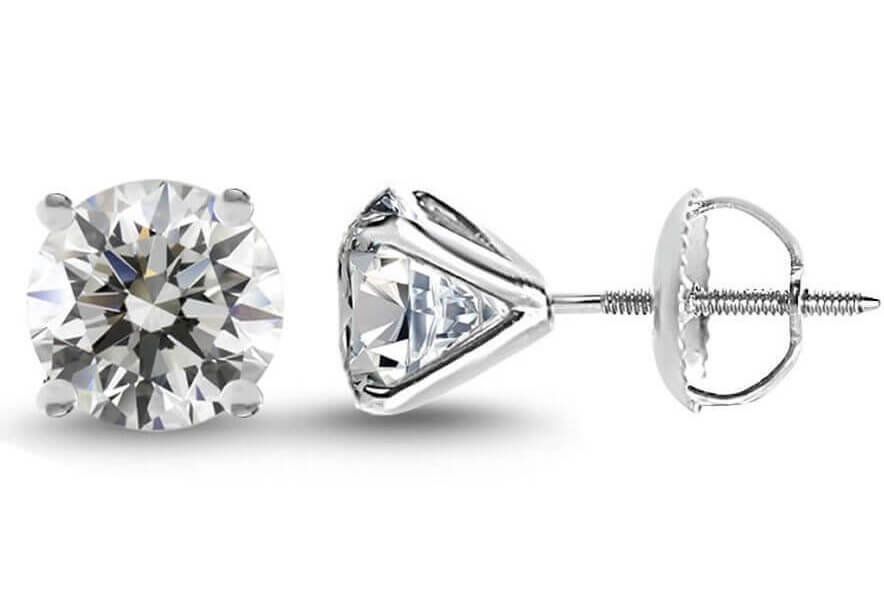
Screw-backs, as the name suggests, are a type of banking that screws onto a threaded earring post. Although they take longer to put on, screw-backs are held in place more securely, which makes them an excellent choice for Diamond earring studs.
Genuine Diamond stud earrings should come with a certificate from an independent Gemological laboratory, such as the GIA (Gemological Institute of America) or GIE (Gemological Institute of Europe). A certificate issued by a grading lab will show you extensive information about the studs, including the Diamond’s carat weight, colour and clarity, and the type of metal the setting is made of.
If you want to know more about our extensive collection of Diamond Jewellery, our experienced, London-based customer advisors are always happy to help.